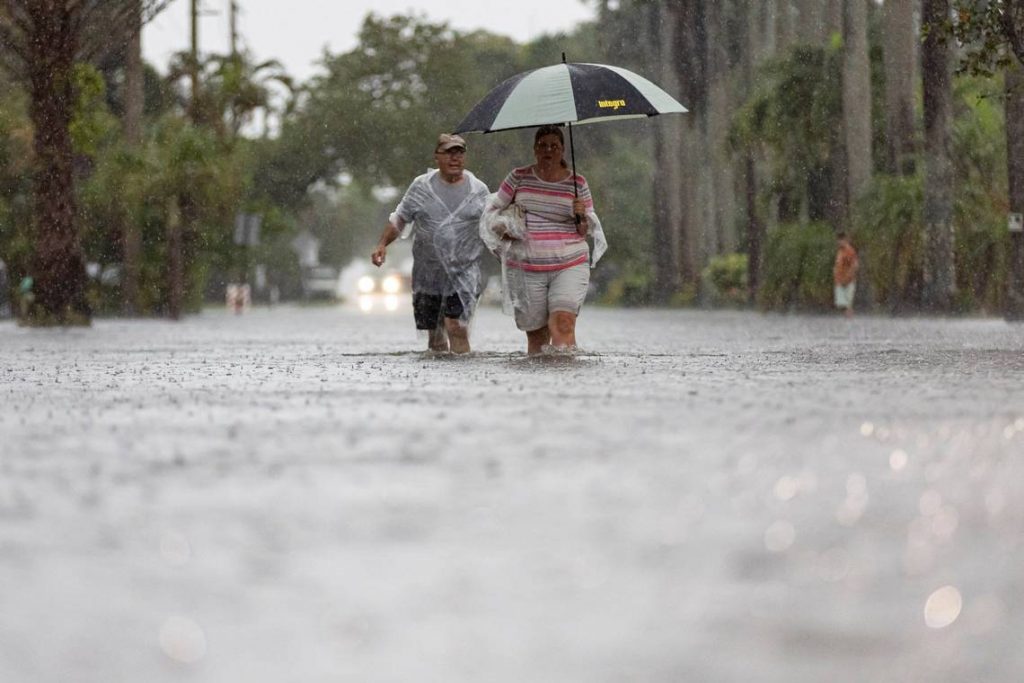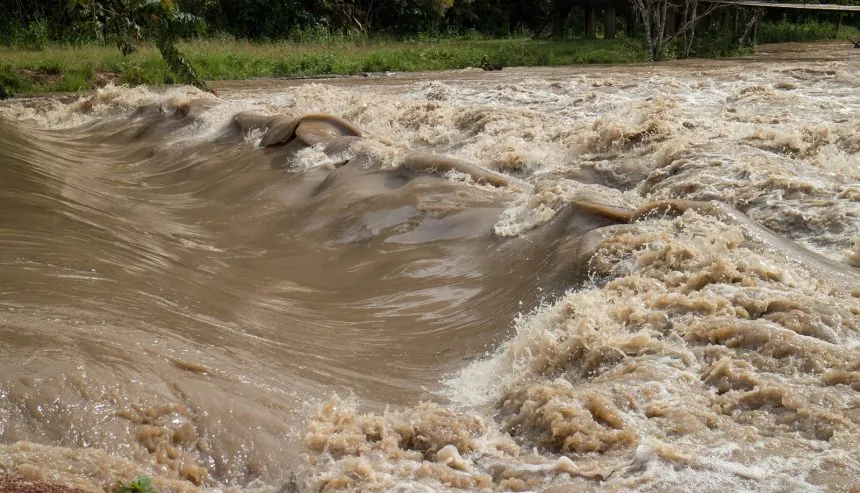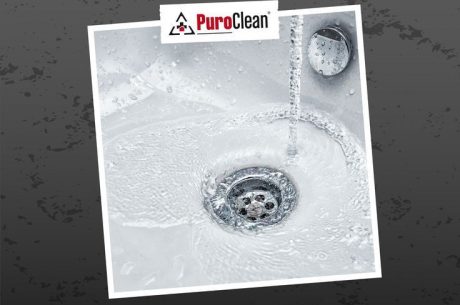Brevard County’s unique geography along Florida’s Space Coast makes it particularly vulnerable to flooding events. Whether you’re a longtime resident or new to the area, understanding the flooding risks and knowing how to respond can make the difference between minor inconvenience and catastrophic property damage.
Understanding Brevard County’s Flooding Challenge
Brevard County stretches along 72 miles of Florida’s Atlantic coastline, encompassing barrier islands, the Indian River Lagoon, and low-lying mainland areas. This geographic positioning creates a perfect storm of flooding vulnerabilities. The county faces threats from multiple sources: tropical storms and hurricanes bringing storm surge, heavy seasonal rainfall overwhelming drainage systems, tidal flooding exacerbated by rising sea levels, and the unique challenges of living in a peninsula surrounded by water on three sides.

Water Damage Restoration in Melbourne, FL
The reality is that flooding in Brevard County isn’t just a possibility—it’s an ongoing concern that affects thousands of properties annually. From the beaches of Cape Canaveral to the mainland communities of Melbourne and Palm Bay, no area remains completely immune to water damage risks.
The Most Flood-Prone Areas in Brevard County
Not all locations within Brevard County face equal flooding risks. The barrier islands, including Merritt Island, Cocoa Beach, and Satellite Beach, experience the most immediate threat from storm surge during hurricanes. These areas can see water levels rise several feet within hours, inundating homes and businesses with devastating saltwater intrusion.
Mainland communities near the Indian River Lagoon face their own unique challenges. Areas like Rockledge, Cocoa, and portions of Melbourne sit at low elevations where heavy rainfall can quickly overwhelm stormwater infrastructure. The combination of impervious surfaces from development and inadequate drainage creates situations where streets become rivers and water backs up into properties.
South Brevard areas, particularly around Palm Bay and Malabar, have extensive canal systems that can overflow during intense rainfall events. These neighborhoods often experience flooding that persists for days after storms pass, as the water has nowhere to go and must slowly drain through already saturated systems.
The True Cost of Flood Damage
Many property owners underestimate the devastating impact flooding can have on their homes and businesses. Water damage extends far beyond visible puddles and wet carpets. Within the first 24 hours of flooding, water begins infiltrating building materials, creating conditions perfect for mold growth and structural deterioration.
Drywall acts like a sponge, wicking water upward from flooded floors. Insulation becomes saturated and loses its effectiveness while potentially harboring mold spores. Wooden framing members can warp and rot. Electrical systems exposed to water create serious safety hazards. HVAC systems and appliances can suffer irreparable damage from water intrusion.
The financial impact extends beyond repair costs. Business interruptions can last weeks or months, resulting in lost revenue and customers. Residential flooding displaces families, forcing them into temporary housing while repairs are completed. Personal belongings with sentimental value may be lost forever. Secondary damage from mold and structural issues can continue mounting if initial water damage isn’t properly addressed.
Recognizing the Warning Signs of Water Damage
After flooding events, knowing what to look for can help you act quickly to minimize damage. Obvious signs include standing water, wet carpets, and water stains on walls and ceilings. However, some indicators are more subtle but equally concerning.
A musty odor often signals hidden moisture and potential mold growth behind walls or under flooring. Discoloration or darkening of building materials suggests water intrusion. Warping, buckling, or cupping of hardwood floors indicates moisture damage. Peeling paint or wallpaper points to water infiltration behind wall surfaces. Soft or spongy spots in floors and walls reveal deteriorating materials.
Don’t overlook signs of moisture in unexpected places. Check inside cabinets and closets. Look in crawl spaces and attics. Inspect behind appliances and furniture. Water follows the path of least resistance and can travel far from the initial intrusion point, causing damage in surprising locations.
The Critical First 24-48 Hours After Flooding
The actions you take immediately after flooding occurs determine whether your property can be successfully restored or suffers permanent damage. Time is your enemy when it comes to water damage. Every hour that passes allows water to penetrate deeper into building materials and increases the likelihood of mold colonization.

Restoration Services Provided by PuroClean of Melbourne
First and foremost, ensure safety. Never enter a flooded building until you’ve confirmed the power is off and there’s no risk of electrical shock. Be aware of structural damage that might make the building unsafe. Floodwater, especially from storm surge or overflowing waterways, can contain sewage, chemicals, and other hazardous contaminants.
Once safe entry is confirmed, documentation becomes critical. Take extensive photos and videos of all damage before touching anything. This documentation supports insurance claims and helps restoration professionals understand the full scope of damage. Photograph water levels, damaged belongings, and affected building materials from multiple angles.
Contact your insurance company immediately to report the claim. Many policies require prompt notification, and delays can complicate coverage. Ask about emergency mitigation measures you can take while waiting for adjusters and restoration professionals.
Professional Water Damage Restoration: Why DIY Isn’t Enough
Many property owners initially believe they can handle flood cleanup themselves with shop vacuums and fans. While these efforts come from good intentions, they rarely prove adequate for significant flooding. Professional water damage restoration involves far more than removing visible water.
At PuroClean of Melbourne, we approach every flooding situation with industrial-grade equipment and proven restoration protocols. Our moisture detection technology identifies hidden water that’s invisible to the naked eye. Thermal imaging cameras reveal moisture trapped inside walls. Moisture meters measure water content in building materials to guide our drying strategy.
Water extraction uses powerful truck-mounted pumps that remove hundreds of gallons per minute, far exceeding what consumer equipment can handle. But extraction is just the beginning. Proper drying requires understanding the science of psychrometrics—the relationship between temperature, humidity, and moisture in materials.
We deploy commercial dehumidifiers that process thousands of pints of moisture daily, not the 50-70 pints typical of consumer units. Air movers create airflow patterns that maximize evaporation from all surfaces. We monitor moisture levels continuously, adjusting equipment placement and settings to achieve optimal drying conditions.
The drying process isn’t complete when surfaces feel dry to the touch. Materials must reach specific moisture content levels to prevent future problems. Wood framing should return to 15% moisture content or less. Concrete may take weeks to properly dry. Rushing this process or declaring materials dry prematurely leads to trapped moisture, mold growth, and callbacks.
Mold: The Secondary Disaster After Flooding
Mold represents one of the most serious consequences of improper flood restoration. Mold spores exist everywhere, but they remain dormant until they find moisture and an organic food source. Flooding provides both in abundance. Within 24-48 hours of water intrusion, mold can begin colonizing drywall, insulation, carpets, and wood.
Some property owners don’t recognize mold as a serious health concern. However, mold exposure can trigger respiratory problems, allergic reactions, and other health issues, particularly in children, elderly individuals, and those with compromised immune systems. Certain mold species produce mycotoxins that create additional health risks.
Preventing mold after flooding requires aggressive action. Quick water removal, thorough drying, and properly cleaning affected surfaces disrupts mold’s ability to establish colonies. Antimicrobial treatments applied to affected areas further inhibit growth. Materials that cannot be adequately cleaned and dried, like saturated drywall and insulation, must be removed to prevent hidden mold growth.
If mold has already established itself, remediation becomes necessary. This involves containment to prevent spore spread, HEPA filtration of air, removal of affected materials, cleaning of salvageable surfaces, and treating areas with antimicrobial solutions. DIY mold cleanup often spreads spores throughout the property, making the problem worse.
Navigating Insurance Claims for Flood Damage
Insurance coverage for flooding creates confusion for many property owners. Standard homeowners and business insurance policies typically exclude flood damage. Coverage for flooding from rising water, storm surge, or overflowing waterways requires separate flood insurance through the National Flood Insurance Program or private insurers.
However, water damage from rain entering through storm-damaged roofs or wind-driven rain through broken windows may be covered under standard policies. Water damage from plumbing failures, appliance malfunctions, or HVAC issues typically falls under standard coverage. Understanding what caused your water intrusion determines which policy applies.
Working with a professional restoration company experienced in insurance claims streamlines the process significantly. We document damage thoroughly, communicate directly with adjusters, and provide detailed estimates that insurance companies understand and accept. Our goal is helping you receive the full coverage your policy provides while removing the burden of managing claim paperwork during an already stressful time.
Many insurance policies include provisions for additional living expenses if your home becomes uninhabitable during restoration. Don’t hesitate to use this coverage—it exists specifically for these situations. Similarly, business interruption coverage can offset lost income while your commercial property undergoes restoration.
What to Do If There is Flooding in Brevard County in 2025
Flood Prevention and Mitigation Strategies
While Brevard County’s geography means complete flood protection remains impossible, property owners can take significant steps to reduce their vulnerability. Prevention proves far less expensive than restoration.
Evaluate your property’s grading and drainage. Ground should slope away from buildings to direct water away from foundations. Clean gutters and downspouts regularly, and extend downspouts to deposit water at least six feet from your foundation. Consider installing French drains or other drainage improvements in low-lying areas.
Install backflow prevention devices on plumbing lines to prevent sewage backup during flooding events. These devices allow water to exit your property but prevent contaminated water from entering through drains. They’re particularly important in areas prone to street flooding.
Seal foundation cracks and apply waterproofing coatings to basement and crawl space walls. Even small cracks provide pathways for water intrusion. Waterproofing creates a barrier that keeps moisture out of your building envelope.
Consider installing a sump pump system in basements or crawl spaces. Battery backup systems ensure the pump continues operating during power outages that often accompany severe storms. Smart sump pumps can alert you to high water levels or system failures through your smartphone.
Elevate critical systems and valuables. Water heaters, HVAC systems, and electrical panels positioned at higher levels suffer less damage during flooding. Store important documents, family heirlooms, and irreplaceable items above flood levels or in waterproof containers.
For properties in high-risk flood zones, more extensive measures may be warranted. Elevating the entire structure above base flood elevation provides maximum protection but requires significant investment. Flood vents allow water to flow through enclosed foundations rather than building up pressure that can cause structural failure. Dry floodproofing with sealant coatings and shields protects basements and lower levels.

Preparing for Hurricane Season in Brevard County
Hurricane season officially runs from June through November, with peak activity occurring from August through October. Brevard County residents should prepare well before storms threaten.
Create a comprehensive emergency plan for your family or business. Identify evacuation routes and destinations. Assemble emergency supply kits with water, non-perishable food, medications, flashlights, batteries, first aid supplies, and important documents. Keep your vehicle fueled and ready.
Protect your property before storms arrive. Install hurricane shutters or have plywood cut to fit windows and doors. Secure outdoor furniture, decorations, and anything that could become a projectile in high winds. Trim trees and remove dead branches that might fall on structures.
Know your flood zone and evacuation level. Brevard County uses alphabetical zones for evacuation orders. Barrier island residents in Zone A evacuate first, followed by mainland low-lying areas in subsequent zones. Never ignore evacuation orders—your life depends on it.
Review your insurance coverage annually before hurricane season begins. Ensure policy limits adequately reflect your property’s current value. Understand your deductibles, coverage limits, and any exclusions. Remember that flood insurance typically requires a 30-day waiting period before coverage becomes effective, so don’t wait until a storm approaches.
What to Expect from Professional Restoration Services
When you contact PuroClean of Melbourne after flooding, our response begins immediately. We understand that water damage emergencies don’t wait for business hours, which is why we provide 24/7 emergency response throughout Brevard County.
Our initial contact involves a rapid assessment to determine the urgency of your situation and dispatch a team to your property. Upon arrival, we conduct a thorough inspection to identify all affected areas, classify the water category (clean, gray, or black water), and assess the extent of damage to structures and contents.
We develop a customized restoration plan based on your specific situation. This plan outlines water extraction procedures, drying strategies, areas requiring demolition, antimicrobial treatments needed, and estimated timelines for restoration completion.
Throughout the restoration process, we maintain constant communication with you and your insurance company. Daily monitoring logs document moisture levels and drying progress. We adjust equipment and strategies as needed to optimize results. Our project managers provide regular updates so you always know where things stand.
The restoration process typically proceeds in phases. Emergency water extraction and security measures come first, followed by demolition of unsalvageable materials, deep cleaning and sanitization, complete structural drying, mold prevention treatments, and final reconstruction to return your property to pre-loss condition.
We coordinate all aspects of restoration, from initial emergency response through final reconstruction. You work with one company and one point of contact throughout the entire process, eliminating the hassle of managing multiple contractors.
The Importance of Acting Fast
Water damage worsens exponentially with time. Within minutes of flooding, water spreads throughout your property, saturating carpets, upholstery, and flooring. Within the first hours, drywall begins absorbing water, furniture finishes may become damaged, and metal surfaces start showing signs of corrosion.
By 24 hours, drywall begins deteriorating, metal begins tarnishing and corroding, and mold and bacteria begin growing. After 48 hours, mold growth accelerates significantly, wood begins swelling and warping, and structural damage becomes more severe. After a week, structural safety may be compromised, mold permeates materials, and the cost of restoration increases dramatically.
This timeline underscores why immediate response to flooding is critical. Every hour you delay allows damage to progress and increases both the scope of restoration needed and the final cost. Quick action protects your property, reduces restoration time, minimizes mold risk, and ultimately saves money.
Your Partner in Flood Recovery
Flooding in Brevard County represents a serious threat that every property owner must take seriously. Whether from hurricanes, severe thunderstorms, or tidal events, water intrusion can devastate homes and businesses. Understanding the risks, taking preventive measures, and knowing how to respond when flooding occurs protects your most valuable assets.
At PuroClean of Melbourne, we’ve dedicated ourselves to helping Brevard County residents and businesses recover from water damage disasters. Our certified technicians bring years of experience, advanced training, and state-of-the-art equipment to every restoration project. We understand the unique challenges flooding presents in our coastal environment and have developed proven strategies for successful restoration.
When flooding strikes your property, you need a restoration partner who responds immediately, works efficiently, and delivers complete restoration. Our commitment to excellence means we don’t just dry out your property—we restore it to a safe, healthy condition that protects your investment for years to come.
Don’t wait until floodwaters invade your property to think about restoration. Save our contact information now so you’re prepared if disaster strikes. And if you’re currently facing flood damage, contact us immediately. Every minute counts when it comes to water damage, and our team stands ready to respond 24 hours a day, 7 days a week.




